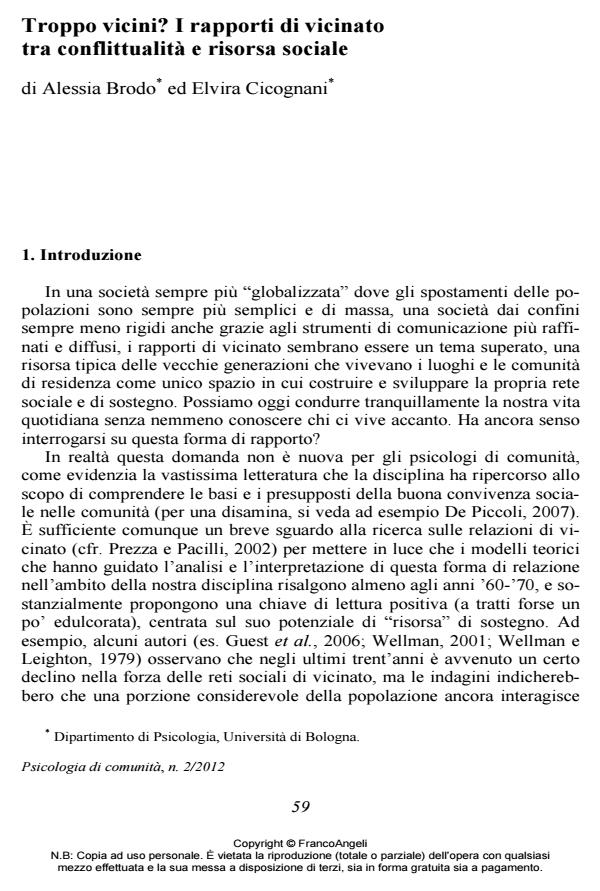Too much close? Neighbourhood relationships between conflicts and social resources
Journal title PSICOLOGIA DI COMUNITA’
Author/s Alessia Brodo, Elvira Cicognani
Publishing Year 2013 Issue 2012/2
Language Italian Pages 11 P. 59-69 File size 349 KB
DOI 10.3280/PSC2012-002006
DOI is like a bar code for intellectual property: to have more infomation
click here
Below, you can see the article first page
If you want to buy this article in PDF format, you can do it, following the instructions to buy download credits

FrancoAngeli is member of Publishers International Linking Association, Inc (PILA), a not-for-profit association which run the CrossRef service enabling links to and from online scholarly content.
Conflicts arising in the context of neighbourhood relationships constitute a problem that challenges community psychologists interested in enhancing the quality of social relationships among citizens, a central aim of social inclusion policies attempting to combat poverty and social exclusion. In this contribution, after briefly discussing research studies on neighbourhood relationships, we present an intervention of social mediation conducted in the territory of Cesena, with the aim to prevent and manage social conflicts, describing the data of a study aimed to evaluate the needs of the community and the impact of the interventions conducted.
Keywords: Neighbourhood relationships, conflict, social mediation, community interventions, social network, support.
Alessia Brodo, Elvira Cicognani, Troppo vicini? I rapporti di vicinato tra conflittualità e risorsa sociale in "PSICOLOGIA DI COMUNITA’" 2/2012, pp 59-69, DOI: 10.3280/PSC2012-002006